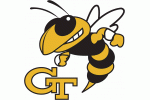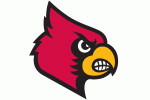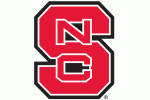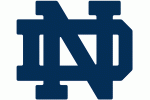If you follow college basketball closely, you have doubtless heard of Ken Pomeroy and are quite likely familiar with his team ratings based on adjusted offensive and defensive efficiencies. The final result of the rating method used by Pomeroy is a Pythagorean win expectation (Pyth) for each team, a number which, among other things, can be used to estimate win probabilities for an individual game between two particular teams. After setting up a tournament simulation model in Excel using these Pyth values and estimated win probabilities, I ran 100,000 simulations to get the probabilities for teams to make the Final Four and national championship game and 10,000 simulations to get the likelihood of wins and ease of draw.
 In addition to finding the probabilities for these various outcomes, I also wanted to evaluate the difficulty of each team’s draw in these brackets. I imagined the problem in this way. If we removed the team in question from the bracket and replaced them with the average tournament team, Team X, and left all else unchanged, how many games would we expect Team X to win? To answer this question, I changed a particular team’s Pyth rating to that of an average tournament team and ran another series of simulations, counting the number of games won by Team X. By repeating this operation for every team in turn, we arrive at a standard measure of the difficulty of draw for each team.
In addition to finding the probabilities for these various outcomes, I also wanted to evaluate the difficulty of each team’s draw in these brackets. I imagined the problem in this way. If we removed the team in question from the bracket and replaced them with the average tournament team, Team X, and left all else unchanged, how many games would we expect Team X to win? To answer this question, I changed a particular team’s Pyth rating to that of an average tournament team and ran another series of simulations, counting the number of games won by Team X. By repeating this operation for every team in turn, we arrive at a standard measure of the difficulty of draw for each team.
Of course, all of these evaluations are dependent upon the accuracy of the Pythagorean ratings in predicting outcomes. If a team is egregiously rated by Pomeroy’s system, this will have a significant effect on their chances and those of the teams placed near them in the bracket. Ken ran a log5 simluation of the brackets this year, which you can see here. The main advantage to the numbers here is that we have an evaluation of the difficulty of each team’s draw.
 As you can see in the conference breakdown, the Big Ten has the most average wins at 1.83 followed by the SEC, ACC and West Coast Conference. Pomeroy’s computers have loved Florida for most of the year, which is giving the Southeastern Conference a bump here even though the competition in the leagues has been down overall. The Gators actually have the 2nd-highest win probability of any team, despite being slotted as a 3 seed.
As you can see in the conference breakdown, the Big Ten has the most average wins at 1.83 followed by the SEC, ACC and West Coast Conference. Pomeroy’s computers have loved Florida for most of the year, which is giving the Southeastern Conference a bump here even though the competition in the leagues has been down overall. The Gators actually have the 2nd-highest win probability of any team, despite being slotted as a 3 seed.
According to the simulations, Louisville has the best chance of winning the national championship among #1 seeds, with Indiana not too far behind. These teams reached the final four in approximately 50% of the sims. The Big Ten may be projected to get a lot of wins, but Ohio State is the only other statistical contender from that league, winning the title more often than #1 seed Kansas and the other #2 seeds. We see that, for all the emphasis placed on getting a #1 seed, Gonzaga’s draw is actually not one of the four best. A potential 2nd round matchup with Pittsburgh, whom the computers love, as well as a likely showdown with Ohio State, makes their coveted #1 seed little more than a nominal improvement over a typical #2 seed. Still, their chances of reaching the final four and cutting down the nets are 4th best among all teams.
Duke and Kansas round out the major contenders, each reaching the final four in about 20% of sims and winning the title roughly 4% of the time. Of course, Duke’s computer rating includes the 13 games without Ryan Kelly. Their chances may be understated here. Neither Duke nor Miami received a #1 seed, but we see that Miami’s draw is actually 4th best in the bracket, while Duke’s placement in the Midwest region is not nearly as huge a statistical disadvantage as many people might expect. While many crowed about the ease of Gonzaga’s bracket based on the eye test, it actually comes in as only the 8th-easiest after running thousands of simulations. (Editor’s note: It is amazing to me that people can eschew the eye test for an entire season, yet use it to bolster their complaints about the seeding.)
Check out the Top 30 below or you can see the full simulation here.
By Spherologue




















